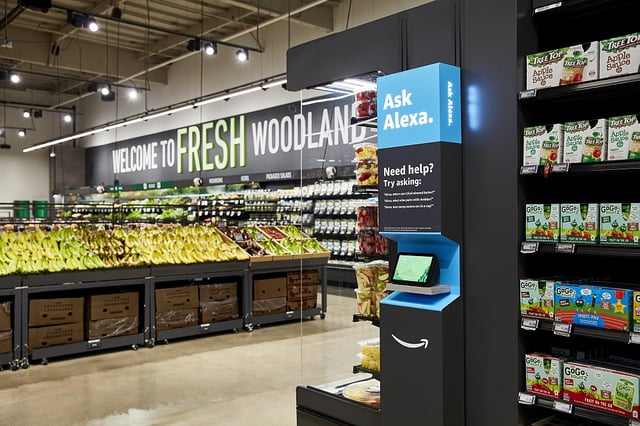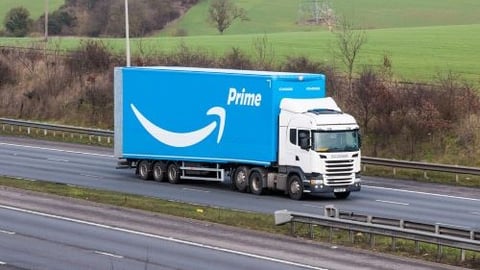Amazon Not Giving Up on Grocery Business
Following some aggressive moves to navigate market challenges, Amazon exceeded expectations in its first quarter performance. The retail behemoth posted a 9% gain in revenue, which reached $127.4 billion during the period ending March 31, 2023. Profits beat Wall Street estimates, coming in at $3.17 billion.
Also in the first quarter, sales in the North America segment rose 11% on a year-over-year to top $76.9 billion. According to Amazon, the company’s store business is improving the cost to serve in its fulfillment network and its advertising businesses continues to deliver robust growth, due in part to investments in technologies such as machine learning.
[Read more: "Amazon Recaps Efforts to Protect Buyers, Sellers"]
The confluence of some easing macro circumstances and a targeted approach to creating efficient operations was evident in this quarter’s results and Amazon’s tactics. “As labor availability has stabilized and inventory supply chain challenges have moderated, we were able to implement some significant structural changes to transition our U.S. fulfillment network to a regionalized model. We believe this improvement put us in a good position to improve both delivery speed and our cost to serve customers over time,” said CFO Brian Olsavsky in the Q1 earnings call.
On that same call, CEO Andy Jassy said that Amazon deployed a number of measures to streamline costs amid headwinds the opening months of fiscal 2023.
“We took a deep look across the company and asked ourselves whether we had conviction about each initiative's long-term potential to drive enough revenue, operating income, free cash flow and return on invested capital. In some cases, it let us to shutter certain businesses, like our physical bookstores, Four Star stores and certain devices where we did didn’t see a path to meaningful returns,” he noted. “In other cases, we looked at some programs that weren’t producing returns we hoped – for example, free shipping for all online grocery orders over $35 – and changed them. We also made the very difficult decision to eliminate about 27,000 corporate roles.”
Although several planned Amazon Fresh stores around the country remained in limbo during the first quarter, Jessy reiterated the company’s overall focus on grocery.
“On the grocery part, we continue to progress there. We’ve been in it for a while and we have a large grocery business. Interestingly, in this current environment, where consumers are being cautious about what they spend and finding ways to trade down in different product variations, consumables has stayed very strong and we continue to be very pleased with that part of our grocery business,” he remarked.
At the same time, Amazon sees opportunity beyond its e-commerce core. “To serve a larger part of the grocery shopping journey, we have to have a bigger physical presence,” he acknowledged.
One of Amazon’s physical grocery operations – Whole Foods Market – continue to resonate with consumers, according to Jassy. “That continues to grow nicely. We've had a number of changes in the past year that have changed the profitability trajectory there,” he said of the grocery business that recently welcomed a new CEO and restructured its regional operations.
Meanwhile, Jassy said that taking a beat to reassess the Amazon Fresh brick-and-mortar locations will pay off in the longer term. “At the same time, it (Whole Foods) is still a portion of the overall market segment and if you really want to serve as much grocery as we’d like to, you have to have a mass physical offering. That’s what we’ve been working on for a few years with the brand we call Amazon Fresh,” he explained.
“We wish we were further along at this point,” he continued. “We’ve tried lot of ideas and haven’t yet found conviction around the format we want to expand more broadly. We have a set of experiments and concepts that we are working on across dozens of stores and are pretty optimistic that some may work and are hopeful that over the next year we find that. We believe we have the opportunity to for it to be much larger for Amazon and to help customers more broadly.”
Looking ahead, Amazon also shared its guidance for the second quarter, projecting net sales to grow 5%-10%, landing between $127 billion and $133 billion.
Seattle-based Amazon is No. 2 on The PG 100, Progressive Grocer’s 2022 list of the top food and consumables retailers in North America. The first certified-organic national grocer, Austin, Texas-based Whole Foods has more than 500 stores in the United States, Canada and the United Kingdom.






